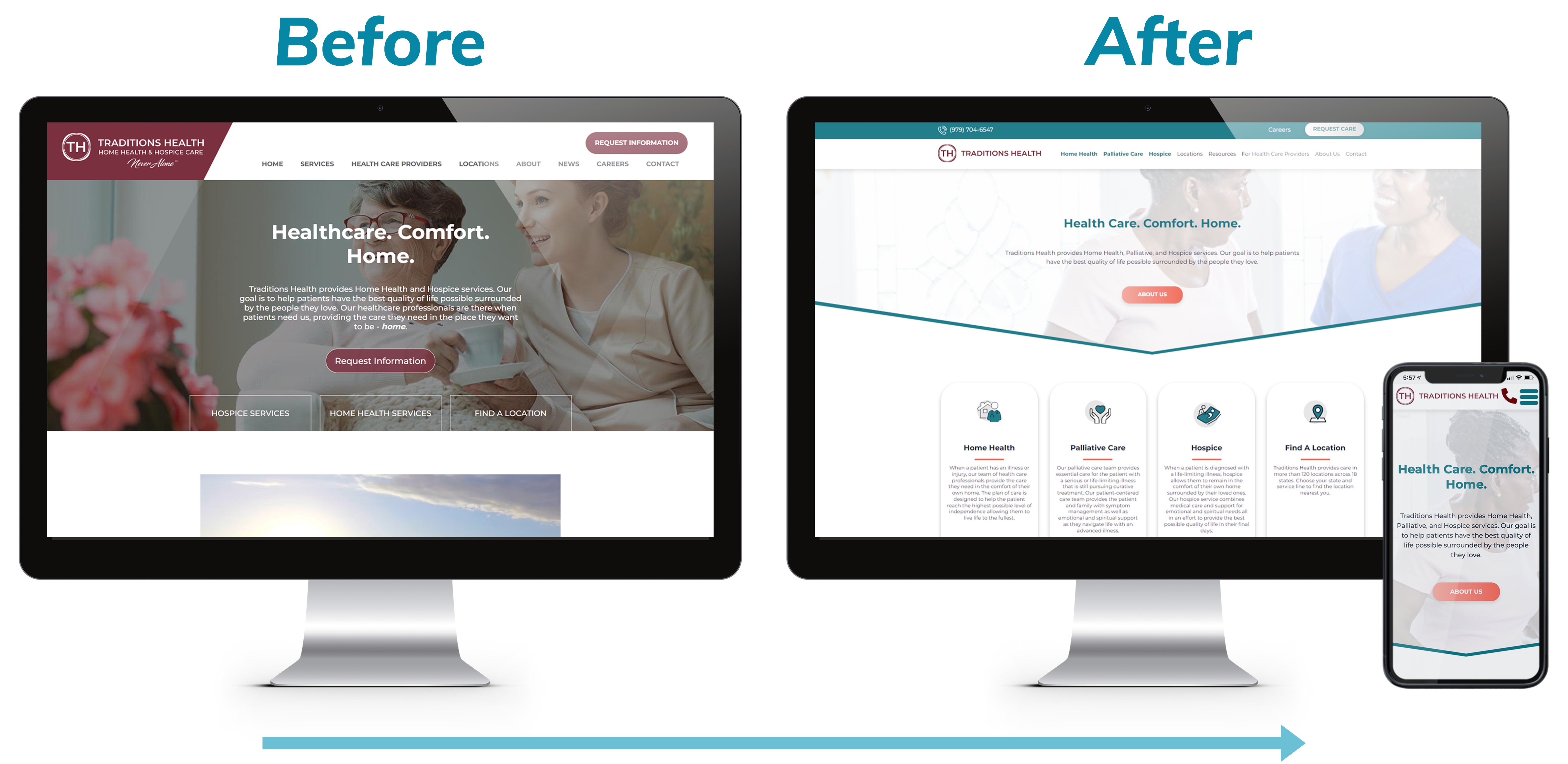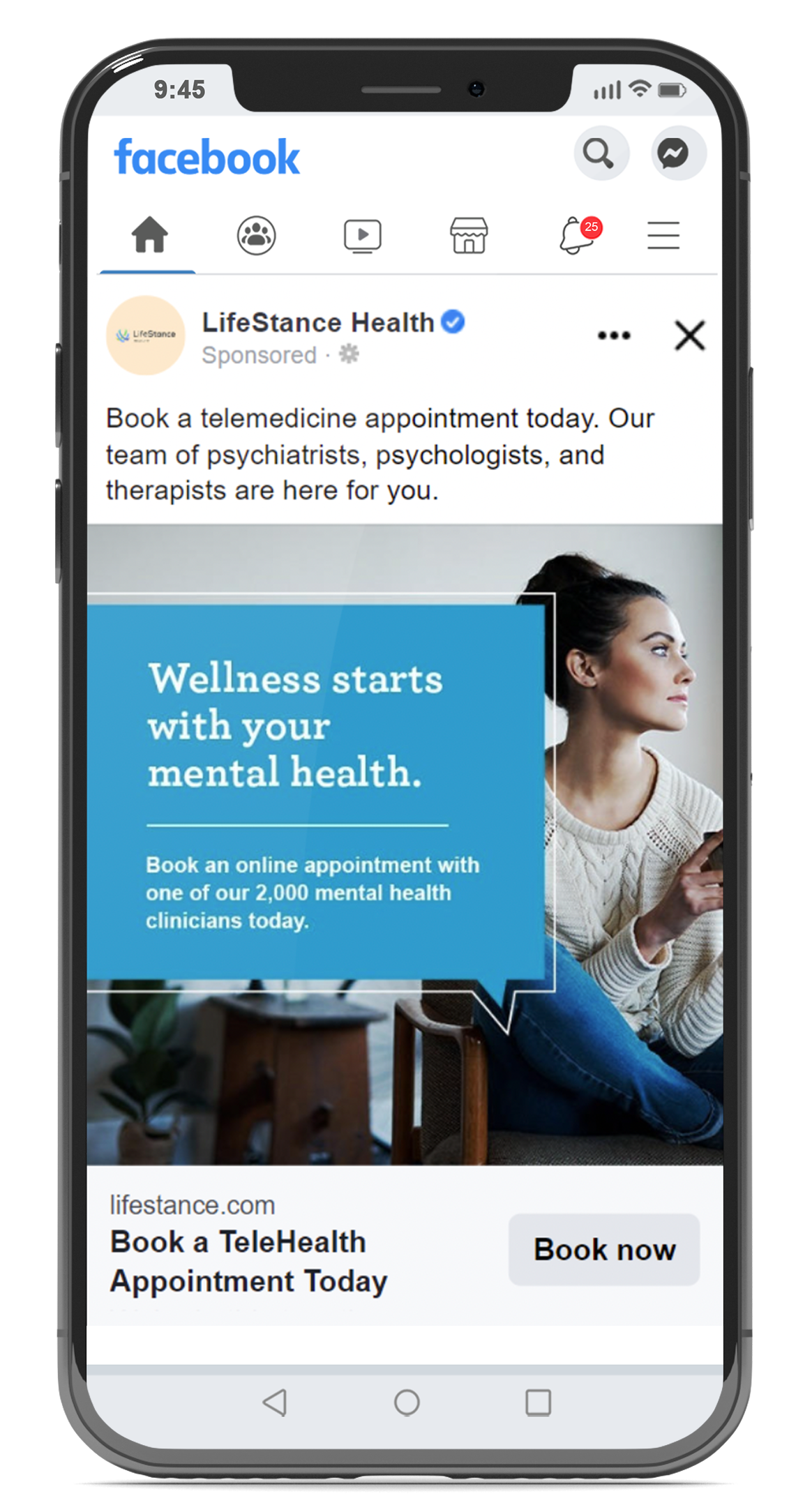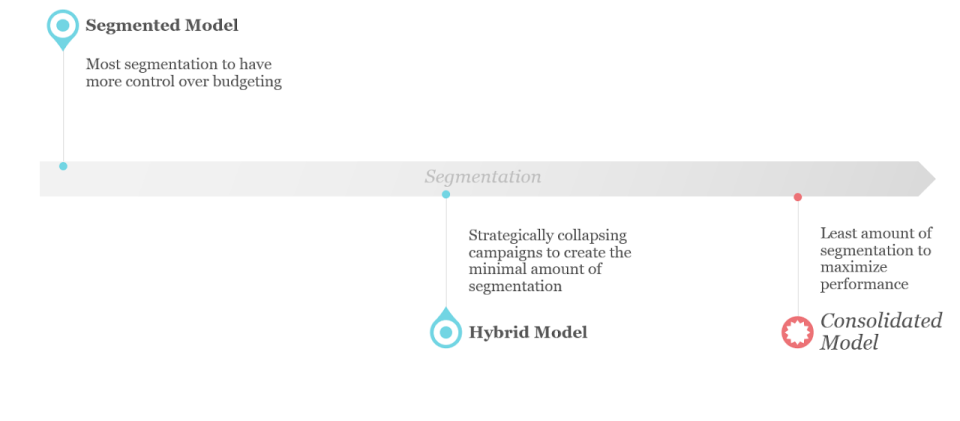The primary goal of medical doctors and healthcare practitioners is to increase patient volume and nurture patient retention. But with the massive shift of the healthcare industry into a more consumer-driven market, physicians are tasked with developing robust digital marketing to attract new and more tech-savvy patients.
Table of Contents
- 1. Understand Patient Needs
- 2. Create a Patient-Centric Website
- 3. Leverage Local SEO for Doctors
- 4. Claim and Optimize Your Google Business Profile
- 5. Be Active on Social Media
- 6. Utilize Content Marketing
- 7. Use Video Marketing for Doctors
- 8. Invest in PPC Marketing
- 9. Manage Your Digital Reputation
- 10. Monitor Your Marketing Campaign
- Data-Driven Digital Marketing for Doctors
Nowadays, patients rely on online sources 1.7 times more than traditional referrals when searching for a healthcare provider. This means doctors can’t longer rely on conventional marketing methods to attract new patients and grow their practice. As such, patients are more conscious of their roles as healthcare consumers and would instead take sole control of their healthcare journey.
Thankfully, consumer-driven healthcare has leveled the digital marketing arena, which means that small practices and consolidated brands can compete with a fully-realized digital marketing strategy. Below are several time-tested marketing strategies for doctors looking to increase patient volume and grow their healthcare brand.
There are various marketing strategies to attract more customers and build brand awareness. However, digital marketing for doctors can look different than most other local businesses. Make sure your healthcare marketing team adopts the following strategies:
1. Understand Patient Needs
The pivotal shift to a more consumer-driven market pushed healthcare providers to focus their marketing efforts directly on patients. If you want to make this direct-to-patient approach work, you need to understand the needs of the patients–who are ultimately tasked with medical decisions. By understanding the patients’ needs, healthcare companies can reach and engage patients directly, which helps build trust and brand awareness.
Once you have a good grasp of your ideal patient’s needs, motivations, and challenges, you can craft your messaging for your marketing campaign. With that said, your messaging must be less technical and focuses on patient education. Speak their language and tell them everything they need to know about their medical needs, treatments, and symptoms. If your messaging resonates with patients, they will likely engage with your brand.
2. Create a Patient-Centric Website
Your website is at the heart of your digital marketing campaign–your digital front door, if you will. Your medical website serves as the first touchpoint between the patient and your practice. Basically, your website presents a golden opportunity to make a lasting impression among visitors and generally impact your profitability and reputation. Statistics support this because 57% of internet users will not recommend a business after a poor web experience.
To ensure great first impressions for your brand, create a patient-centric website by adopting the best practices in web design. So what does a patient-centric medical website look like?
- Fast, intuitive, and responsive: Patient-centricity is about removing barriers and friction from the buyer’s journey, aka providing a comfortable user experience. At the very least, your medical website must be fast-loading, easy to navigate, and work correctly on all devices (desktop or mobile).
- Searchable and discoverable content: Most visitors coming to your website have healthcare concerns and questions and need answers ASAP. Your medical website should have key information like articles, service pages, and insurance information that must be easy to find and searchable. Don’t hide your best content behind confusing layouts, poorly-designed menus, and multiple web pages.
- Make it easy for patients to choose you: The worst thing that can happen is a captured lead that your website can’t convert because you can’t guide them to your conversion points. Make it easy for patients to convert with AI chatbots, prominent call-to-actions (CTAs), and information request forms.

3. Leverage Local SEO for Doctors
The majority of healthcare providers will compete at a local level. After all, healthcare is a local service. It makes sense; medical doctors rely on attracting patients within their geographical area, while patients want to work with a nearby physician. Thus, a good bulk of SEO for doctors should focus on enhancing their local web presence with local SEO.
Below are several proven strategies to improve your practice’s organic search visibility within your geographical area.
Citations & Listings
A winning local SEO campaign can start by optimizing citations and listings. For example, you can leverage mainstream structured directories like Healthgrades, WebMD, Yelp, and ZocDoc by populating them with accurate and timely information about your practice. It can be as simple as providing your NAP (name, address, phone number) and other relevant information.
Create Localized Keyword Strategies
Sitewide keywords will not do much for your local SEO efforts. Therefore, you and your marketing team should discuss which local SEO keywords to target. One good tip for developing a solid local keyword strategy is to focus on your unique selling propositions (USPs), geographical location, and how people search for your services. Keep in mind that local SEO keywords are generally high-intent, solution aware, and location-based.
4. Claim and Optimize Your Google Business Profile
One of the most straightforward and highly effective ways of bolstering your local presence is by claiming and optimizing your Google Business Profile or GBP. Thanks to various SERP features, such as local map packs, featured snippets, and GBP, Google has become a destination for many searchers instead of a map. This is because people find precisely what they need from the search results page.
GBP is a listing for physical locations like clinics or health centers, and it’s tied to Google Search and Maps. It’s Google’s primary method of verifying a business, so you must claim and optimize your practice’s GBP. If not, you can simply create your profile since it’s free. Optimizing your GBP is as simple as providing the following information:
- Practice name
- Address
- Contact information (phone number, email)
- Business hours
- On-site photos of staff and facility
- Appointment links
- Health protocols (i.e., COVID-19 restrictions)
- A short blurb describing your practice
In addition, GBP also lets you add more content like videos, a list of services and amenities, payment type accepted, insurance information, etc. GBP listings also have a place where patients can leave reviews, which works similarly to platforms like Yelp, Angie’s List, etc.
5. Be Active on Social Media
Did you know that around 90% of Americans seek healthcare-related information on social media? Whether it’s Facebook, TikTok, Twitter, or Instagram, your next patient is likely using social media networks to look up healthcare

topics. Social media marketing is essentially a direct line to your target patients, especially among Millennials and Gen-Z patients.
Social media platforms aren’t just for posting announcements and business activities; they’re open channels for communication with your patients. In fact, a recent survey found that 12% of healthcare marketers have gained
patient insights via social media marketing. In another survey,
60% of patients said they trust doctors who post on social media.
True enough, social media marketing makes your practice current and approachable. You can engage people on social media by regularly posting doctor interviews, medical Q&As, facility video tours, and staff member highlights. It’s a great way to personalize and humanize your digital marketing efforts.
Having active accounts on various social media networks drives patient engagement and helps attract new patients, thus growing your practice.
6. Utilize Content Marketing
The healthcare world can be cold, complex, and intimidating for many patients. You can bridge that gap between the patient and the healthcare industry with a strong content strategy. Content marketing is one of the greatest tools doctors can use for patient engagement and to build trust and credibility for their brands.
With content marketing, you can demonstrate your knowledge and expertise through educational content such as blog articles, press releases, case studies, webinars, and many more. Using high-quality and relevant content, you’re positioning yourself as an authority and a trustworthy resource for patients. Use your content to answer common patient questions and provide valuable information. You’re also enhancing your search rankings by integrating target keywords and phrases.
A robust content marketing campaign also gets you on the good side of Google–thanks to the recent Helpful Content Update that rolled out last year. Your website and other pages should offer consumers more relevant and helpful content. Therefore, you can’t rely on previous practices like optimizing keyword density, word count, and keyword stuffing anymore.
7. Use Video Marketing for Doctors
Admittedly, many physicians and healthcare providers do not fully embrace video marketing–but that’s a big mistake. According to recent research, 92% of video marketers claimed that this marketing approach has helped them obtain a positive ROI. But you probably think video production is expensive because you’ll need professional videographers and editors. You don’t have to create professional-grade videos to advertise your practice (but it certainly helps).
Doctors have several themes for creating marketing videos, including:
- Meet the team videos: Healthcare can be intimidating for many people, and many would go for providers they’re familiar with. Making videos of your healthcare team will engage patients and help them familiarize themselves with your team. Patients will be comfortable with you and your team before entering the building.
- Specialty educational videos: Create videos that will help patients understand their medical conditions and the services you provide better. For example, you can make a simple video explaining diabetes and the best treatments and management strategies available.
- Patient testimonials: Testimonial videos are powerful tools in video marketing as they help build trust and credibility for your brand. Patient feedback about their healthcare experiences is a top-notch storytelling vehicle for engaging patients and earning their trust.
- Frequently asked questions (FAQs): Patients will have many questions and concerns about their healthcare journey. Determine the most common questions people have about your practice through your social channels and listings, then create a video that provides detailed answers to those questions.
Direct-to-consumer style video content is unparalleled when it comes to engagement, despite its relatively low-budget nature.
8. Invest in PPC Marketing
Due to the urgent nature of healthcare, doctors can provide emergency healthcare solutions to patients. With that said, Pay-per-click advertising or PPC, remains one of the fastest ways for doctors to reach their target audience. PPC lets you place your practice in front of high-quality leads by showing your ads at the top of the search engine results.
Below are some time-tested strategies that will improve the performance of your PPC campaign:
Choose the Right Account Structure
Modern PPC now relies on automated systems more than ever. With Google Ads, you can leverage its automated bidding systems for more strategic and efficient. However, you need to use the appropriate account structure to get the most out of Google’s Smart Bidding System. For example, we generally utilize hybrid accounts for multi-location physician groups to take advantage of the best qualities of both segmented and consolidated structures.

Target Search Intent Along the Patient Funnel
Successful PPC marketers know the importance of aligning keywords and ad groups along the patient journey funnel. Modern healthcare consumers are more tech-savvy and will research extensively before booking their first appointment. Google calls this phenomenon the Zero Moment of Truth (ZMOT) as consumers move slowly through the stages of the buyer’s journey.
Hence, your healthcare marketing team must develop a patient funnel alongside each step of your target audience’s healthcare journey. This alignment requires a diverse keyword strategy and keyword groups targeting each conversion funnel phase. A basic conversion funnel should look like this:
- Lower funnel or product-aware leads: These users are ripe for conversion and will likely set their first appointment. Use high-intent, product-aware keywords like “bariatric doctor near mount vernon wa” to capture leads in this funnel.
- Mid-funnel or solution-aware leads: These users know they need a physician but are still determining which treatments or procedures to get. Capture leads from this funnel using keywords that educate the readers, such as “How long to recover from bariatric surgery.”
- Upper funnel or problem-aware leads: These are the ZMOT leads in the process of researching and discovering solutions to their healthcare issues. They know their healthcare needs (e.g., managing chronic back pain or establishing care) but are still determining if they need a doctor. Use education keywords like “establishing care visit vs standard visit” to optimize.
9. Manage Your Digital Reputation
A positive reputation within the community is an invaluable asset for doctors. Recent surveys say that 71% of internet users refer to online reviews when evaluating a healthcare provider. This is hardly a surprise; people want to work with the best-reviewed healthcare provider nearby. A positive online reputation encourages hospitals and medical professionals to refer patients to your clinic or facility. These facts highlight the importance of a good reputation management campaign.
The best way to get more reviews for your practice is to ask the patients directly. Train all your patient-facing staff members on the most effective review collection processes. Tell your patients to relate their experiences; many would be happy to do so, especially if they’re satisfied with their visits.
Completing the reviews must be fast and easy, or your patients won’t bother. You must ensure multiple channels for leaving reviews, including your follow-up emails, short surveys, your website and social media accounts, and GBP listing. Lastly, consider investing in review solicitation software like Podium, Birdeye, and Weave since they can integrate with various CRM systems and automate your review collection process.
10. Monitor Your Marketing Campaign
One of the core pillars of digital marketing is business intelligence, where you gain marketing insights to visualize growth and determine which of your marketing pieces are producing results. If you’re not monitoring your marketing campaign, how will you know if your marketing efforts are paying off?
Generally, I recommend that doctors with multiple locations use the closed-loop reporting (CLR) model to connect the dots about how each marketing piece affects the patient journey (i.e., leads that generate the most sales). CLR enables you to gain new customer insights backed by reliable data.
However, the key to proper CLR implementation is the suitable attribution model, such as first-touch, last-touch, linear, multi-touch, time-decay, etc.
Data-Driven Digital Marketing for Doctors
With the processes outlined, doctors should be able to kickstart their marketing campaign on the right foot. With the pivotal shift towards healthcare consumerization, doctors should focus on patient-centricity when crafting their marketing campaigns. Doctors need to build trust and credibility with patients in their communities by understanding their needs and providing valuable content and comfortable user experiences.

